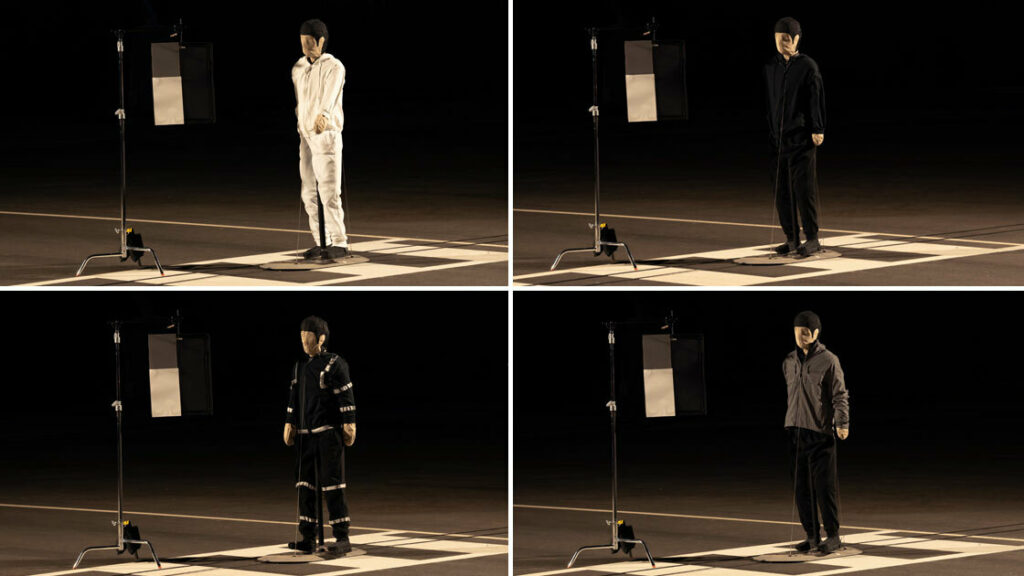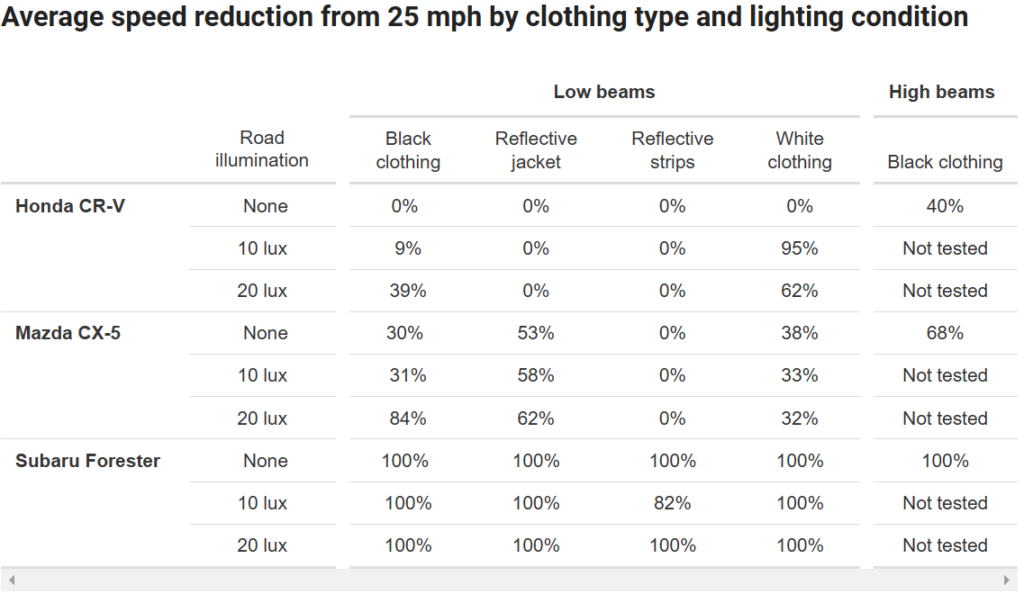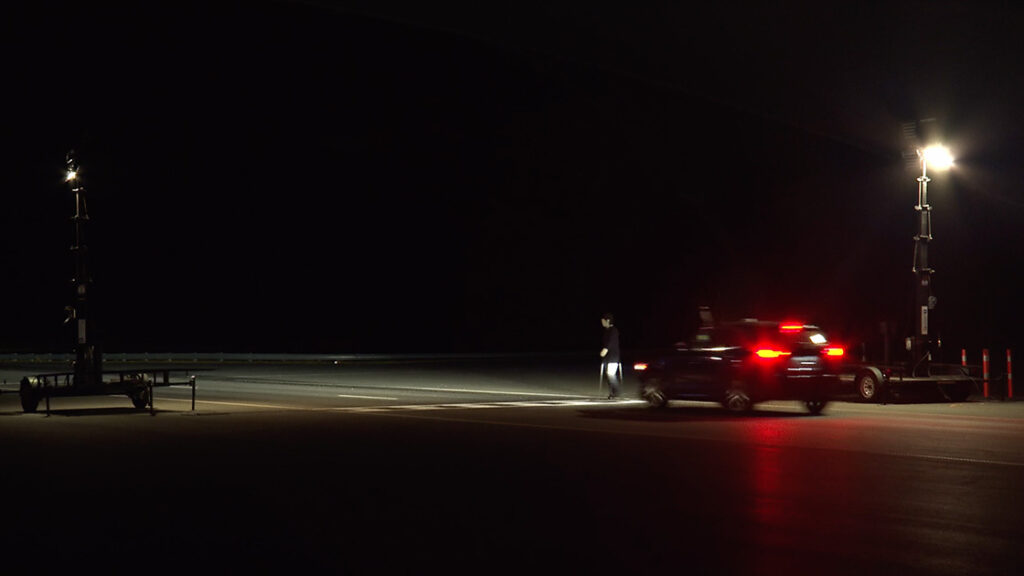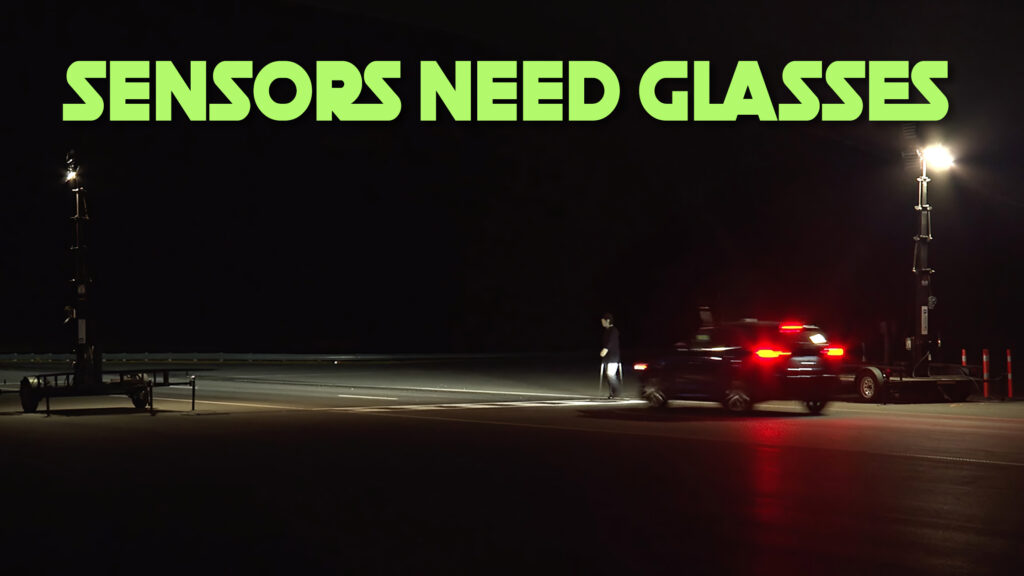- A new study from the IIHS indicates that reflective clothing might actually harm pedestrians.
- Specifically, it appears to make them invisible to some automated crash prevention systems.
- Not all automakers’ automated systems struggled to detect pedestrians wearing reflective clothing.
Pedestrian safety is a huge topic of conversation in the automotive world. In the USA, regulators and automakers grapple with unique hurdles, from infrastructure issues to technology shortcomings. Now, according to the Insurance Institute for Highway Safety (IIHS), there’s a new one to consider. A new study finds that reflective clothing might actually make automated braking technology less effective.
The Test: Three Cars, Four Outfits, and One Dummy
Let’s break down some of the details first. To investigate how pedestrian automatic emergency braking (AEB) systems handle reflective clothing, the IIHS tested three 2023 vehicles: the Subaru Forester, the Honda CR-V, and the Mazda CX-5. These models were chosen, in part, because the IIHS already had performance data on their respective systems.
Read: See What Happens When Two Cars Hit A Chinese EV At 60KM/H In Triple Crash Test
Adding a reflective jacket or reflective strips to a dummy’s clothing had an adverse effect in many situations. The test had these cars driving at 25 mph (40 km/h) as they approached the dummy. Testers dressed the dummy four different ways, in black clothes, in white clothes, in a reflective jacket, and with reflective strips.
Mixed Results, With One Standout Performer
The results were far from uniform. The Honda struggled to slow for the dummy almost regardless of anything. While it managed to slow while the dummy wore black or white, it hit the dummy every single time it was wearing anything reflective. The Mazda fared slightly better, slowing for the dummy with a reflective jacket, but completely missing the dummy with reflective strips.

Notably, the Subaru Forester was a sterling success story compared to the other two cars regardless of the scenario. It stopped before hitting the dummy every single time aside from one test where the dummy was wearing reflective strips and the roadway was illuminated to 10 lux.
“These results suggest that some automakers need to tweak their pedestrian automatic emergency braking systems,” said IIHS President David Harkey. “It’s untenable that the clothes that pedestrians, cyclists and roadway workers wear to be safe may make them harder for crash avoidance technology to recognize.”

The Problem With Reflective Clothing
“The placement and motion of reflective strips on the joints and limbs of pants and jackets allows drivers to quickly recognize the pattern of movement as a person,” said study author David Kidd, a senior research scientist at IIHS. “Unfortunately, the moving strips didn’t have the same effect for the pedestrian AEB systems we tested and probably confounded their sensors.”
What is the result of this finding? To a degree, automakers need to go back to the drawing board to ensure that their AEB system works with reflective clothing. “This is a worrisome blind spot,” Harkey said. “To make good on their potential, pedestrian detection systems have to work with the other commonly used safety measures.”
It’s also worth noting that this study has potential flaws. For one thing, it only includes three different cars across three different brands. For now, we have no idea how systems from other brands fare in this type of test. In addition, it’s plausible that some cars from Mazda, Subaru, and Honda could score differently than these three.
No doubt, engineers will work toward finding a solution here. It’s also great to know that some brands like Subaru are already ahead of the curve. For now, beware that reflective clothes don’t necessarily make you less likely to get hit as a pedestrian out there.





